Related Research Articles
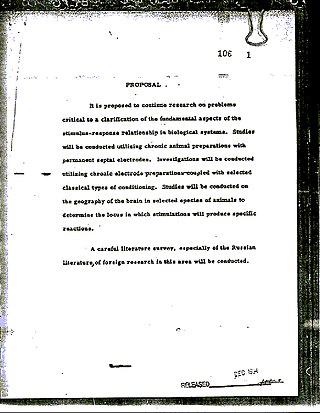
Project MKUltra was an illegal human experiments program designed and undertaken by the U.S. Central Intelligence Agency (CIA) to develop procedures and identify drugs that could be used during interrogations to weaken people and force confessions through brainwashing and psychological torture. It began in 1953 and was halted in 1973. MKUltra used numerous methods to manipulate its subjects' mental states and brain functions, such as the covert administration of high doses of psychoactive drugs and other chemicals without the subjects' consent, electroshocks, hypnosis, sensory deprivation, isolation, verbal and sexual abuse, and other forms of torture.

Acute radiation syndrome (ARS), also known as radiation sickness or radiation poisoning, is a collection of health effects that are caused by being exposed to high amounts of ionizing radiation in a short period of time. Symptoms can start within an hour of exposure, and can last for several months. Early symptoms are usually nausea, vomiting and loss of appetite. In the following hours or weeks, initial symptoms may appear to improve, before the development of additional symptoms, after which either recovery or death follow.

The Tuskegee Study of Untreated Syphilis in the Negro Male was a study conducted between 1932 and 1972 by the United States Public Health Service (PHS) and the Centers for Disease Control and Prevention (CDC) on a group of nearly 400 African American men with syphilis. The purpose of the study was to observe the effects of the disease when untreated, though by the end of the study medical advancements meant it was entirely treatable. The men were not informed of the nature of the experiment, and more than 100 died as a result.
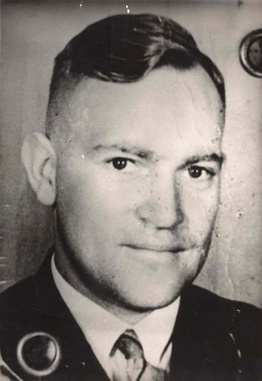
Horst Schumann was an SS-Sturmbannführer (major) and medical doctor who conducted sterilization and castration experiments at Auschwitz and was particularly interested in the mass sterilization of Jews by means of X-rays.
M. Krishnan Nair was an Indian oncologist. He was the founding director of the Regional Cancer Centre, Thiruvananthapuram, a director of the S.U.T. Institute of Oncology, and Trivandrum Cancer Center(TCC), part of SUT Royal Hospital in Thiruvananthapuram (Trivandrum) and a professor at the Amrita Institute of Medical Sciences & Research in Kochi. The Government of India awarded him the fourth highest civilian award of the Padma Shri in 2001 for his contributions in the cancer care field.
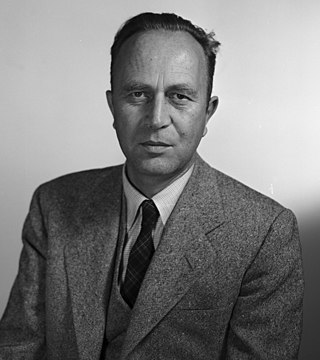
Joseph Gilbert Hamilton was an American professor of Medical Physics, Experimental Medicine, General Medicine, and Experimental Radiology as well as director (1948–1957) of the Crocker Laboratory, part of the Lawrence Berkeley National Laboratory. Hamilton studied the medical effects of exposure to radioactive isotopes, which included the use of unsuspecting human subjects.
Eugene Saenger was an American university professor and physician. A graduate of Harvard University, Saenger was an extremely controversial pioneer in radiation research and nuclear medicine, at the expense of human autonomy and dignity. He taught at the University of Cincinnati for more than thirty years.
The ringworm affair refers to circumstances involving an alleged number of 20,000 to 200,000 Jews who were treated between 1948 and 1960 for tinea capitis (ringworm) with ionizing radiation to the head and neck area within Israel. The population suffering from the disease in Israel at the time was composed primarily of newly-arrived immigrants and populations who were expected to emigrate, mostly from North Africa, as well as some from Middle East and elsewhere, but many Jewish children were irradiated in their home countries regardless of their intent to emigrate.

Since the discovery of ionizing radiation, a number of human radiation experiments have been performed to understand the effects of ionizing radiation and radioactive contamination on the human body, specifically with the element plutonium.

Nazi human experimentation was a series of medical experiments on prisoners by Nazi Germany in its concentration camps mainly between 1942 and 1945. There were 15,754 documented victims, of various nationalities and age groups, although the true number is believed to be more extensive. Many survived, with a quarter of documented victims being killed. Survivors generally experienced severe permanent injuries.
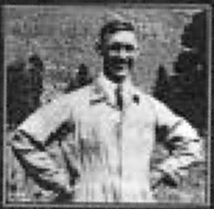
Albert Stevens (1887–1966), also known as patient CAL-1 and most radioactive human ever, was a house painter from Ohio who was subjected to an involuntary human radiation experiment and survived the highest known accumulated radiation dose in any human. On May 14, 1945, he was injected with 131 kBq of plutonium without his knowledge because it was erroneously believed that he had a terminal disease.

The Plutonium Files: America's Secret Medical Experiments in the Cold War is a 1999 book by Eileen Welsome. It is a history of United States government-engineered radiation experiments on unwitting Americans, based on the Pulitzer Prize–winning series Welsome wrote for The Albuquerque Tribune.

Holmesburg Prison, given the nickname "The Terrordome," was a prison operated by the city of Philadelphia, Pennsylvania and the Pennsylvania Department of Prisons (PDP) from 1896 to 1995. The facility is located at 8215 Torresdale Ave in the Holmesburg section of Philadelphia. It was decommissioned in 1995 when it closed. As of today, the structure still stands and is occasionally used for prisoner overflow and work programs.
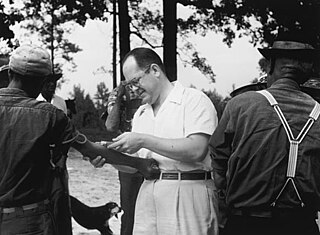
Numerous experiments which are performed on human test subjects in the United States are considered unethical, because they are performed without the knowledge or informed consent of the test subjects. Such tests have been performed throughout American history, but some of them are ongoing. The experiments include the exposure of humans to many chemical and biological weapons, human radiation experiments, injections of toxic and radioactive chemicals, surgical experiments, interrogation and torture experiments, tests which involve mind-altering substances, and a wide variety of other experiments. Many of these tests are performed on children, the sick, and mentally disabled individuals, often under the guise of "medical treatment". In many of the studies, a large portion of the subjects were poor, racial minorities, or prisoners.
Human subject research legislation in the United States can be traced to the early 20th century. Human subject research in the United States was mostly unregulated until the 20th century, as it was throughout the world, until the establishment of various governmental and professional regulations and codes of ethics. Notable – and in some cases, notorious – human subject experiments performed in the US include the Tuskegee syphilis experiment, human radiation experiments, the Milgram obedience experiment and Stanford prison experiments and Project MKULTRA. With growing public awareness of such experimentation, and the evolution of professional ethical standards, such research became regulated by various legislation, most notably, those that introduced and then empowered the institutional review boards.
Travel outside the Earth's protective atmosphere, magnetosphere, and in free fall can harm human health, and understanding such harm is essential for successful crewed spaceflight. Potential effects on the central nervous system (CNS) are particularly important. A vigorous ground-based cellular and animal model research program will help quantify the risk to the CNS from space radiation exposure on future long distance space missions and promote the development of optimized countermeasures.

The The Svedberg Laboratory (TSL) is a university facility, based in Uppsala, Sweden. The activities at TSL are based around the particle accelerator Gustaf Werner cyclotron.
Unethical human experimentation is human experimentation that violates the principles of medical ethics. Such practices have included denying patients the right to informed consent, using pseudoscientific frameworks such as race science, and torturing people under the guise of research. Around World War II, Imperial Japan and Nazi Germany carried out brutal experiments on prisoners and civilians through groups like Unit 731 or individuals like Josef Mengele; the Nuremberg Code was developed after the war in response to the Nazi experiments. Countries have carried out brutal experiments on marginalized populations. Examples include American abuses during Project MKUltra and the Tuskegee syphilis experiments, and the mistreatment of indigenous populations in Canada and Australia. The Declaration of Helsinki, developed by the World Medical Association (WMA), is widely regarded as the cornerstone document on human research ethics.

Wright Haskell Langham was an internationally renowned expert in the fields of plutonium exposure, aerospace and aviation medicine, Eniwetok nuclear tests, the Palomares and Greenland nuclear accidents. Sometimes Langham was referred to as Mr. Plutonium.
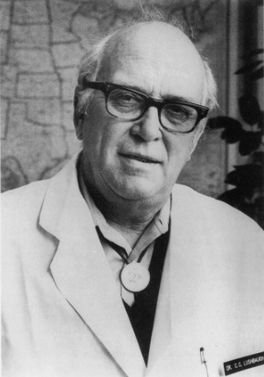
Clarence Chancelum Lushbaugh Jr. was an American physician and pathologist. He was considered an expert in radiological accidents and injuries, as well as a pioneer in radiation safety research, and he is known for his controversial research involving human subjects.
References
- ↑ United States. Advisory Committee on Human Radiation Experiments (1996). The Human Radiation Experiments. USA: Oxford University Press. pp. 239–240. ISBN 9780195107920.
- ↑ Stephens, Martha (2002). The Treatment: The Story of Those Who Died in the Cincinnati Radiation Tests. Durham and London: Duke University Press. pp. 3–14.
- ↑ Stephens, Martha (2002). The Treatment: The Story of Those Who Died in the Cincinnati Radiation Tests. Durham and London: Duke University Press. p. 10.
- ↑ Schneider, Keith (1994-04-11). "Cold War Radiation Test on Humans To Undergo a Congressional Review". The New York Times. ISSN 0362-4331 . Retrieved 2017-04-30.
- 1 2 Dicke, William (11 October 2007). "Eugene Saenger, Controversial Doctor, Dies at 90". The New York Times. Retrieved 8 May 2024.
- ↑ Stephens, Martha (2002). The Treatment: The Story of Those Who Died in the Cincinnati Radiation Tests. Durham and London: Duke University Press. pp. 12, 309.
- ↑ Leopold, Ellen (2009). Under the Radar: Cancer and the Cold War. Rutgers University Press. p. 98. ISBN 9780813544045.
- ↑ Moreno, Jonathan D. (2001). Undue Risk: Secret State Experiments on Humans. Psychology Press. pp. 9–10. ISBN 9780415928359.
- 1 2 Stephens, Martha (2002). The Treatment: The Story of Those Who Died in the Cincinnati Radiation Tests. Durham and London: Duke University Press. pp. 15–16.
- 1 2 Kutcher, Gerald (2009). Contested Medicine: Cancer Research and the Military. University of Chicago Press. p. 4. ISBN 9780226465333.
- 1 2 3 4 5 Hawk, Morris L. (1995). The "Kingdom of Ends": In Re Cincinnati Radiation Litigation and the Right to Bodily Integrity. Cas. W. Res. L. Rev. 977.
- 1 2 Stephens, Martha (2002). The Treatment: The Story of Those Who Died in the Cincinnati Radiation Tests. Durham and London: Duke University Press. pp. xxi.
- 1 2 Department of the Army Office of the Surgeon General Research and Development Division Washington 25 D.C. "List of Attachments For Briefing Book Volume 2". Archived from the original on 2017-07-19. Retrieved 2017-04-29.
{{cite web}}: CS1 maint: numeric names: authors list (link) - 1 2 3 4 5 6 7 8 9 10 Saenger, Eugene (2002). Hearing Testimony of Eugene Saenger. Durham and London: Duke University Press. pp. 296–305.
{{cite book}}:|work=ignored (help) - ↑ Kutcher, Gerald (2009). Contested Medicine: Cancer Research and the Military. University of Chicago Press. p. 104. ISBN 9780226465333.
- 1 2 3 4 5 Stephens, Martha (2002). The Treatment: The Story of Those Who Died in the Cincinnati Radiation Tests. Durham and London: Duke University Press. pp. 293–295.
- 1 2 "Chapter 8: Postwar TBI-Effects Experimentation: Continued Reliance on Sick Patients in Place of Healthy "Normals"". biotech.law.lsu.edu. Retrieved 2017-05-01.
- ↑ Egilman, David (1998). A Little Too Much of the Buchenwald Touch? Military Radiation Research at the University of Cincinnati, 1960-1972. India: Overseas Publishers Association. p. 69.
- ↑ Egilman, David (1998). A Little Too Much of the Buchenwald Touch? Military Radiation Research at the University of Cincinnati, 1960-1972. India: Overseas Publishers Association. p. 70.
- ↑ Saenger, Eugene L. (December 1972). Radiation Effects In Man: Manifestations And Therapeutic Efforts. University of Cincinnati College of Medicine.
- ↑ Egilman, David (1998). A Little Too Much of the Buchenwald Touch? Military Radiation Research at the University of Cincinnati, 1960-1972. India: Overseas Publishers Association. p. 72.
- ↑ Stephens, Martha (2002). The Treatment: The Story of Those Who Died in the Cincinnati Radiation Tests. Durham and London: Duke University Press. p. 21.
- ↑ Soper, Gordon K. "Gordon K. Soper, Principal Deputy Assistant to the Secretary of Defense for Atomic Energy Before the Subcommittee on Administrative Law and Government Relations Cincinnati, Ohio April 11, 1994". Archived from the original on July 19, 2017. Retrieved 2017-04-29.
- 1 2 Stephens, Martha (2002). The Treatment: The Story of Those Who Died in the Cincinnati Radiation Tests. Durham and London: Duke University Press. p. 180.
- ↑ Schneider, Keith (1994-04-11). "Cold War Radiation Test on Humans To Undergo a Congressional Review". The New York Times. ISSN 0362-4331 . Retrieved 2017-05-01.
- 1 2 3 4 5 United States. Advisory Committee on Human Radiation Experiments (1996). The Human Radiation Experiments. Oxford University Press. p. 243.
- ↑ Stephens, Martha (2002). The Treatment: The Story of Those Who Died in the Cincinnati Radiation Tests. Durham and London: Duke University Press. p. 28.
- 1 2 Egilman, David (1998). A Little Too Much of the Buchenwald Touch? Military Radiation Research at the University of Cincinnati, 1960-1972. India: Overseas Publishers Association. p. 77.
- ↑ Egilman, David (1998). A Little Too Much of the Buchenwald Touch? Military Radiation Research at the University of Cincinnati, 1960-1972. India: Overseas Publishers Association. pp. 78–79.
- ↑ Stephens, Martha (2002). The Treatment: The Story of Those Who Died in the Cincinnati Radiation Tests. Durham and London: Duke University Press. p. 17.
- ↑ Schneider, Keith (1994-04-12). "Researchers Are Accused Of Forgeries". The New York Times. ISSN 0362-4331 . Retrieved 2017-05-01.
- ↑ Stephens, Martha (2002). The Treatment: The Story of Those Who Died in the Cincinnati Radiation Tests. Durham and London: Duke University Press. p. 308.
- 1 2 Egilman, David (1998). A Little Too Much of the Buchenwald Touch? Military Radiation Research at the University of Cincinnati, 1960-1972. India: Overseas Publishers Association. p. 73.
- ↑ Stephens, Martha (2002). The Treatment: The Story of Those Who Died in the Cincinnati Radiation Tests. Durham and London: Duke University Press. pp. 49, 308.
- ↑ Egilman, David (1998). A Little Too Much of the Buchenwald Touch? Military Radiation Research at the University of Cincinnati, 1960-1972. India: Overseas Publishers Association. p. 88.
- 1 2 3 4 Egilman, David (1998). A Little Too Much of the Buchenwald Touch? Military Radiation Research at the University of Cincinnati, 1960-1972. India: Overseas Publishers Association. p. 89.
- ↑ Egilman, David (1998). A Little Too Much of the Buchenwald Touch? Military Radiation Research at the University of Cincinnati, 1960-1972. India: Overseas Publishers Association. p. 90.
- ↑ Shields, George. Letter to Dr. Edward A. Gall. March 13, 1967. University of Cincinnati Interdepartmental Correspondence Sheet.
- ↑ Radford, Edward. Letter to Dr. Edward A. Gall. April 29, 1967. University of Cincinnati Interdepartmental Correspondence Sheet.
- ↑ Witt, R. L.. Letter to Dr. Edward A. Gall. May 9, 1967. University of Cincinnati Interdepartmental Correspondence Sheet.
- 1 2 3 Egilman, David (1998). A Little Too Much of the Buchenwald Touch? Military Radiation Research at the University of Cincinnati, 1960-1972. India: Overseas Publishers Association. p. 91.
- ↑ United States. Advisory Committee on Human Radiation Experiments (1996). The Human Radiation Experiments. USA: Oxford University Press. pp. 243-244. ISBN 9780195107920
- 1 2 United States. Advisory Committee on Human Radiation Experiments (1996). The Human Radiation Experiments. USA: Oxford University Press. pp. 244. ISBN 9780195107920
- 1 2 3 Stephens, Martha (2002). The Treatment: The Story of Those Who Died in the Cincinnati Radiation Tests. Durham and London: Duke University Press. p. 12.
- ↑ Stephens, Martha (2002). The Treatment: The Story of Those Who Died in the Cincinnati Radiation Tests. Durham and London: Duke University Press. p. 1, 5.
- ↑ Egilman, David (1998). A Little Too Much of the Buchenwald Touch? Military Radiation Research at the University of Cincinnati, 1960-1972. India: Overseas Publishers Association. p. 87.
- 1 2 "Chronology of radiation study". enquirer.com. Retrieved 2017-06-07.
- 1 2 United States. Advisory Committee on Human Radiation Experiments (1996). The Human Radiation Experiments. USA: Oxford University Press. pp. 240. ISBN 9780195107920
- ↑ Stephens, Martha (2002). The Treatment: The Story of Those Who Died in the Cincinnati Radiation Tests. Durham and London: Duke University Press. p. 3-7.
- ↑ Stephens, Martha (2002). The Treatment: The Story of Those Who Died in the Cincinnati Radiation Tests. Durham and London: Duke University Press. p. 5.
- 1 2 Stephens, Martha (2002). The Treatment: The Story of Those Who Died in the Cincinnati Radiation Tests. Durham and London: Duke University Press. p. 11.
- ↑ Stephens, Martha (2002). The Treatment: The Story of Those Who Died in the Cincinnati Radiation Tests. Durham and London: Duke University Press. p. 14.
- ↑ Stephens, Martha (2002). The Treatment: The Story of Those Who Died in the Cincinnati Radiation Tests. Durham and London: Duke University Press. p. 16-19.
- ↑ Stephens, Martha (2002). The Treatment: The Story of Those Who Died in the Cincinnati Radiation Tests. Durham and London: Duke University Press. p. 20.
- ↑ Stephens, Martha (2002). The Treatment: The Story of Those Who Died in the Cincinnati Radiation Tests. Durham and London: Duke University Press. p. 19.
- 1 2 "Radiation experiments conducted by the University of Cincinnati Medical School with Department of Defense funding : hearing before the Subcommittee on Administrative Law and Governmental Relations of the Committee on the Judiciary, House of Representatives, One Hundred Third Congress, second session, April 11, 1994".
- ↑ Stephens, Martha (2002). The Treatment: The Story of Those Who Died in the Cincinnati Radiation Tests. Durham and London: Duke University Press. p. 111.
- 1 2 Stephens, Martha (2002). The Treatment: The Story of Those Who Died in the Cincinnati Radiation Tests. Durham and London: Duke University Press. p. 22.
- ↑ Stephens, Martha (2002). The Treatment: The Story of Those Who Died in the Cincinnati Radiation Tests. Durham and London: Duke University Press. p. 238.
- ↑ The Doctors’ Trial. The United States of America vs. Karl Brandt et al. US Military Tribunal Nuremberg, Judgement of 19 July 1947.
- ↑ Stephens, Martha (2002). The Treatment: The Story of Those Who Died in the Cincinnati Radiation Tests. Durham and London: Duke University Press. p. 289.
- ↑ "Radiation controversy outlasts lawsuit". enquirer.com. Retrieved 2017-06-07.
- ↑ "Part of hospital demolished". enquirer.com. Retrieved 2017-06-07.